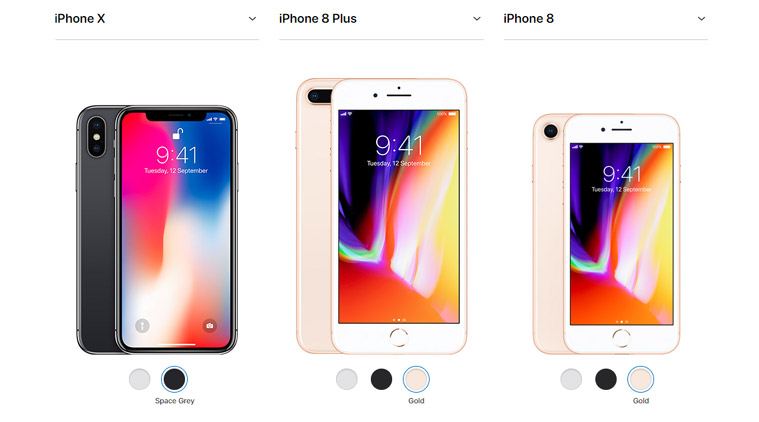On September 12, Apple presented three new smartphones – the iPhone 8 and the iPhone 8 Plus, which can be considered the improved versions of last year’s models, and the iPhone X, with a new frameless design and a set of unique functions. How different is the iPhone X from the previous models? Is it worth the purchase price?
Display
The iPhone X features an AMOLED screen that occupies 81.5% of the front surface. Its diagonal is 5.8 inches, while the iPhone 8 and iPhone 8 Plus preserved the IPS screens of the previous dimensions, 4.7 inches and 5.5 inches, as well as the classic design, with large frames at the top and bottom.
Thanks to the AMOLED matrix, the iPhone X supports the HDR10 and Dolby Vision technologies. Its resolution is higher than that of the iPhone 8 Plus – 2436×1125 pixels against Full HD. The upper part of the matrix of the iPhone X has a cutout for the frontal camera and sensors.
Battery
The iPhone 8 is equipped with an 1821 mAh battery, whereas the iPhone 8 Plus has a 2675 mAh battery. The battery capacity of the iPhone X is unknown, but it is likely the same as in the iPhone 8 Plus. In the talk and playback modes, the iPhone X works just as long, and a little less in other modes (when the screen is on).
The iPhone 8 and iPhone 8 Plus feature the Touch ID fingerprint scanner, while the iPhone X uses the Face ID scanner, a more innovative method of unlocking the screen. Apple reassures the audience that the second option is simpler and safer.
Weight
At 202 grams, the iPhone 8 Plus is the heaviest phone in the history of Apple. The iPhone 8 weighs considerably less (148 grams), while the iPhone X falls in the middle (174 grams), which can be considered neither light nor heavy.
Size
Despite the large size of the screen, the dimensions of the iPhone X are smaller than those of the iPhone 8 Plus. It is 14.3 mm shorter and 7.2 mm narrower, but 0.2 mm thicker.
Camera
The frontal camera of the iPhone X is responsible for Face ID, which is why it contains several sensors. It is closely connected with the IR-emitter, IR-camera and point projector, which allows one to adjust the previously unavailable shooting parameters in real time.
The back camera in the iPhone X is similar to the one in the iPhone 8 Plus. There are the same two lenses that produce a 12-megapixel image. This time, both lenses have optical image stabilization. Aside from that, the X version features a high-speed telescopic lens with a ƒ / 2.4 diaphragm, compared to ƒ / 2.8 in the iPhone 8 Plus.
Portrait Mode
Dual cameras in the iPhone 8 Plus and iPhone X support the Portrait mode. Thanks to the depth sensors built into the camera, the main object is separated from everything else, which creates a beautiful effect; the face is sharp while the background is blurred. This mode, as well as the soft face lighting, also work when taking selfies, but only in the iPhone X. The iPhone 8 features none of this.
Gestures
The iPhone 8 and iPhone 8 Plus are equipped with the Home button that users are used to. The iPhone X doesn’t have it; gestures are used instead. For example, swiping from bottom to top opens the Home screen, swiping down from the upper right corner launches the Control Center, and swiping left and right in the bottom part of the screen quickly switches between applications.
The iPhone can be considered an experimental smartphone. Adjusting to its innovations will take time, and there’s no guarantee that users will like them. It’s impossible to say whether these features will stick around and evolve in future models.
If you are the happy owner of an iPhone 8, begin using it by reading the User Guide on this website.




